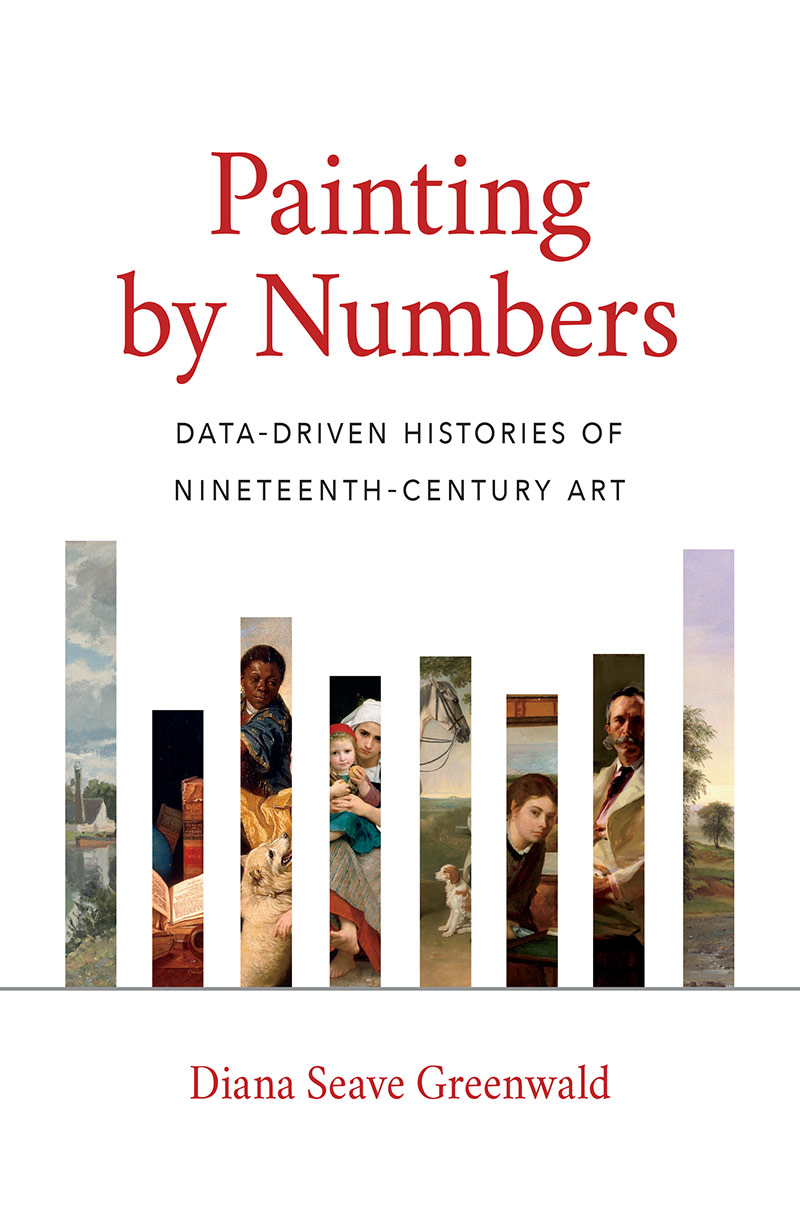Chapter Summaries
Chapter 1 – What is a Data-Driven History of Art?
This introduction focuses primarily on establishing the methods that are used throughout the book. It explains why using data-driven methods are a useful complement to the traditional approaches of art history and lays out which elements of social scientific theory and methods guide the analyses in each of the component case studies.
Chapter 2 –The Historical Data of the Art World
This chapter presents a graphical overview of the datasets cited throughout the book, which all together provide information about more than 500,000 works of art. It also discusses the exhibition venues that generated this data so readers can understand both how comprehensive the data is and the ways in which it is limited.
Chapter 3 – Between City and Country: Industrialization and Images of Nature at the Paris Salon
Drawing on data about the subject of paintings shown at the Paris Salon, Chapter 3 examines the relationship between industrialization and images of nature and rural life in art—a common research topic in the existing literature. Using regression analysis, the chapter shows that artists’ ability to move to affordable rural villages easily accessible from Paris—thanks to new train routes—influenced the creation of more images of nature.
Chapter 4 – Why Have There Been No Great Women Artists? Artistic Labor and Time Constraint in Nineteenth-Century America
Guided by theory from labor economics and using data about works by nineteenth-century women artists, this chapter examines the ways in which women artists’ domestic responsibilities forced them to be active in certain genres and media—particularly still-life paintings and watercolors—that are faster to finish and can be completed on a more flexible schedule. This insight about how artistic form and content change in response to demands on women’s time highlights structural barriers that continue to hamper nineteenth-century women artists’ posthumous reputations and continue to limit women artists’ attainment today.
Chapter 5 – Implied but Not Shown: Empire at the Royal Academy
Using data generated from titles of works shown at the Royal Academy, this chapter shows that there were relatively few images of the empire shown at the academy’s annual exhibition—even at the height of British imperial expansion and power. Jumping off from this apparent erasure and guided by economic theories of inclusive and extractive institutions, this chapter concludes that evidence of empire at the Royal Academy often appeared in the form of portraits of newly wealthy Britons rather than explicit depictions of colonies and sites of imperial exploitation.
Chapter 6 – Conclusion
This conclusion focuses on the implications of reintegrating data about hundreds of thousands of lost, forgotten, and overlooked works into the history of art. It is an enjoinder for art historians to reconsider the limits of the selection of works they usually study and consider quantitative evidence to further contextualize the art historical canon.

